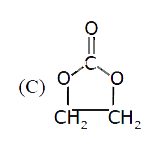A
B
C
D
Text Solution
AI Generated Solution
The correct Answer is:
|
Topper's Solved these Questions
CARBOXYLIC ACID
MOTION|Exercise Exercise - 3|16 VideosView PlaylistCARBOXYLIC ACID
MOTION|Exercise Exercise - 4 (LEVEL - 1 )|15 VideosView PlaylistCARBOXYLIC ACID
MOTION|Exercise Exercise - 2(LEVEL - 1)|26 VideosView PlaylistCARBONL COMPOUNDS
MOTION|Exercise EXERCISE - 4 LEVEL -II|24 VideosView PlaylistCHEMICAL BONDING
MOTION|Exercise EXERCISE -4 LEVEL-II|40 VideosView Playlist
Similar Questions
Explore conceptually related problems
Knowledge Check
Similar Questions
Explore conceptually related problems
MOTION-CARBOXYLIC ACID-Exercise - 2(LEVEL - 2)
- In the given reaction [P], [P] will be :
08:58
|
Play - In the given reaction
04:42
|
Play - In the given reaction C(2)H(5)-O-overset(O)overset(||)C-O-C(2)H(5)+H...
05:05
|
Playing Now 01:46
|
Play04:19
|
Play- Ease of esterification of following alcohol with HCOOH is (I) CH(3)-...
05:18
|
Play - The product x in the above reaction is
08:43
|
Play 04:54
|
Play01:44
|
Play- x in the above reaction is
04:45
|
Play 07:45
|
Play- Consider the following compounds : The decreasing order of reacti...
10:21
|
Play 01:34
|
Play- In the given reaction sequence (A) and (B) respectively are :
04:48
|
Play - Following will not yield a cyclic compound on heating :
07:37
|
Play - In the following reaction X overset(Delta)to Y. X is the lowest molecu...
Text Solution
|
Play - X overset(NH(3)//Delta)toB underset(Delta)overset(KOBr)to overset(HNO(...
12:45
|
Play - PhCH(2)-overset(CH(3))overset(|)(CH)-CH(2)-overset(O)overset(||)C-NH(2...
05:13
|
Play - Product X & Y are :–
05:31
|
Play - Urea (H(2)NCONH(2))+ hot dilute NaOH to X+NH(3), X is
02:15
|
Play
